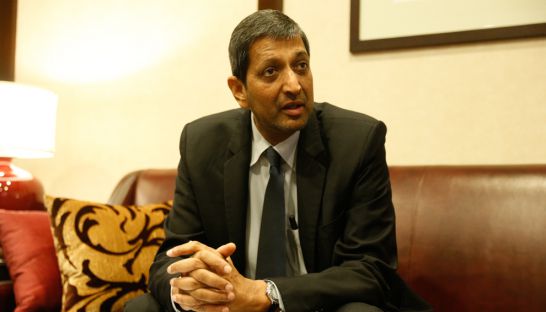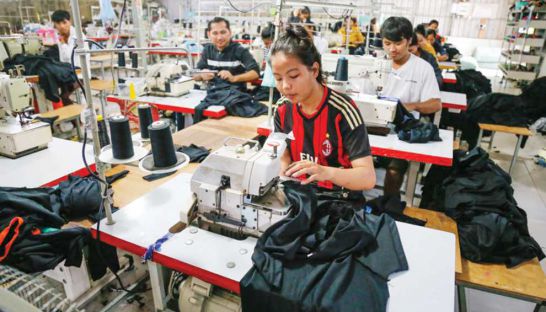Emirates boosts cargo capacity
Emirates boosts cargo capacity
UAE-based Emirates Airlines inaugurated a daily passenger flight on Saturday connecting Phnom Penh to Dubai, with a stopover in Yangon, Myanmar. The Post’s Kali Kotoski sat down with Ravishankar Mirle, Emirates vice president of commercial cargo for the Far East and Australasia, to discuss the freight component of its new route.

Emirates Airlines was already running a cargo service once a week to Phnom Penh. Why did the company decide to expand into daily passenger and cargo flights?
On the freight side of the business, we are not new to the Cambodian market. Historically, we have trucked cargo to gateways such as Bangkok and Ho Chi Minh City. We started building up the Cambodian market as an offline point, but in April 2016 we had our first dedicated cargo flight.
Cambodia is still very much an emerging economy and with a sustained 7 percent annual GDP growth, we calculate that means about 13 percent export growth. So to cater to this type of growth, we decided that an offline solution – trucking cargo to a different gateway – would not be a long-term product suitable for this market.
Our aircrafts can carry 20 tonnes of freight. So with 20 tonnes in the passenger belly, we tend to call our passenger flights ‘freighters in disguise’.
The new Phnom Penh to Dubai flight has a stopover in Yangon. What are the benefits of serving the two Southeast Asian capitals on a single flight to Dubai?
For us it makes a lot of sense to connect two emerging markets. And our cargo operations are just piggy-backing on the commercial flight. So while it is a passenger-oriented carrier, roughly 87 percent of our revenue comes from the passenger side and 13 percent from cargo.
Previously this flight connected Yangon with Hanoi, but we are delinking Hanoi by adding a direct flight to Vietnam. We see these new routes as part of our global expansion, because we know the factories of the world are in Asia. Roughly 34 percent of our cargo revenue comes from the Southeast Asia region. So, I think Cambodia fits in very well because it manufactures garments that need distribution capability and the reach to take goods to customers.
What is the cargo allocation for each of the two countries on this flight?
What we tend to do is compartmentalise the freight giving 10 tonnes to each country. While we believe we could sell more than 10 tonnes daily in the Cambodian market, Yangon has a landing weight restriction. Meanwhile, because Yangon doesn’t have a payload restriction for takeoff, we can fill it up with whatever space is left.
With Dubai as the hub, what is the final destination for the majority of the cargo that Emirates takes out of Cambodia?
We are primarily servicing the fashion industry of Europe and the US. But beyond garments for Cambodia, there is also the perishable traffic market, such as agricultural products and fish, for example, that we could bring to Dubai.
We have done this very well in Vietnam, because until Emirates flew there you could not get dragon fruit, lychee or rambutan in the Middle East. So we effectively created a market for the producers to find a new destination by acting as an air bridge. The same can be done for agriculture in Cambodia and we hope to work with exporters on that.
How long will it take to determine if a new route is profitable?
Well, when we get into a new route, we create a business timeline that is based on both the passenger and cargo factor, and track the performance through a very tight management control. If a route is not performing according to plan, we take action. But generally our experience is that 12 months is a long enough amount of a time to judge whether we have reached maturity and profitability.














